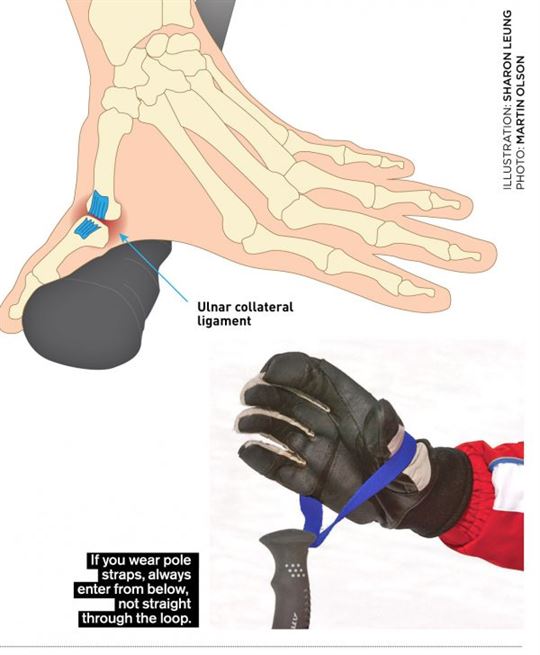An acquaintance of mine was unfortunate enough to be diagnosed with skier’s thumb on both hands from a single fall. His treatment involved a cast on both wrists for six weeks. During his recovery period, I still have memories of his roommates arguing over who would help him in the bathroom.
Skier’s thumb, also known as gamekeeper’s thumb, is responsible for at least 10 per cent of ski injuries that require a physician visit. The condition was described by a Scottish surgeon who noticed that gamekeepers were particularly susceptible to this injury as a result of breaking the necks of rabbits and pheasants using their thumb and index fingers.

When a skier sustains this injury, it usually occurs from a fall on an outstretched hand while holding a ski pole. Many skiers, especially those who ski trees, believe that pole straps should not be used at all because of thumb and shoulder injuries. Have you ever seen a heli- or cat-ski guide with pole straps? The ulnar collateral ligament of the thumb can either be strained, or partially or completely torn during a fall. Treatment ranges from a splint or cast, to surgery, depending on the severity of the injury.
Many controversies exist about how ski pole design and pole strap use may prevent skier’s thumb. Most people agree that there’s a simple way of using a pole strap that reduces the risk of injury. By putting your hand up through the strap from below the grip, before holding the grip, you reduce the chances of injury. This pole strap position also has a bonus of making it easier to push off while on the flats.
Over the years, pole manufacturers have created innovative grip designs and breakaway pole straps, with the hope of preventing skier’s thumb, but it’s difficult to find proof that they’re reducing injuries. Remembering to drop your poles during a fall may prevent thumb injury but it requires impressive co-ordination—and for those skiing dangerously steep lines, poles may be needed for self-arrests.
—Dr. John Foote is an emergency room physician at Toronto’s Mount Sinai Hospital and a Devil’s Glen skier.



